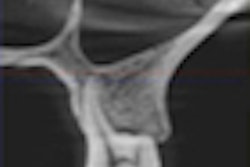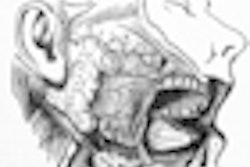Researchers believe they may have found a way to avoid damaging salivary glands during radiotherapy treatment for head and neck cancer -- a discovery that could improve the quality of life of 500,000 patients a year worldwide with the disease.
Presenting their findings May 10 at the 31st conference of the European Society for Radiotherapy and Oncology, the researchers said they had discovered that the stem cells essential for regenerating the parotid gland were located mainly in its major ducts, and that these could be avoided during radiotherapy or given a minimal radiation dose.
Around 40% of patients treated for head and neck cancer suffer from xerostomia due to radiation damage of the parotid gland, the researchers said. This causes problems with eating, sleeping, speech, tooth loss, and oral hygiene, leading to diminished quality of life, social isolation, and difficulty in continuing work, the researchers noted.
"During radiotherapy, attempts to minimize the risk of this complication have been aimed at reducing the average dose to the salivary gland, on the assumption that it would not make a difference where in the gland the radiation dose was reduced," said Peter van Luijk, PhD, a research associate at the University Medical Center Groningen, in a press release announcing the findings.
"However, this does not seem logical according to the anatomy of the salivary gland, and in previous work we discovered that reductions in the radiotherapy dose to some parts of the gland allowed the parotid gland to regenerate, whereas a dose to other parts did not."
He and his colleagues hypothesized that these observations could be explained by a non-uniform distribution of stem cells necessary for the long-term maintenance of organ function and affected by irradiation. So they investigated the location of stem cells and the effects of radiotherapy to particular regions of the gland first in mouse and rat models, and then in parotid and salivary gland tissue taken from patients (after informed consent) undergoing a neck dissection for head and neck cancer.
They found that in mouse, rat, and human tissue, the stem cells were predominately located in the major ducts of the parotid gland.
"We have found in previous work that these stem cells are capable of regenerating a parotid gland when they have been transplanted after irradiation," he said.
The position of the stem cells in rats corresponds to the cranio-ventral extension of the gland in humans, he noted, "so even though the glands have different shapes in rats and humans, the stem cells are in the exact same anatomical structure," he added.
The researchers said they then tested their hypothesis by creating a mathematical model based on the treatment of 36 patients, which enabled them to estimate the expected parotid gland function depending on the dose to the stem cells.
It is easy to spare the parotid gland during radiotherapy, van Luijk noted.
"The stem cell region is on the side of the gland that is normally furthest away from the target area containing the tumor cells," he said. "Since only this area needs a high radiation dose, this distance makes avoiding the stem cell area easier than avoiding other parts of the gland."



















